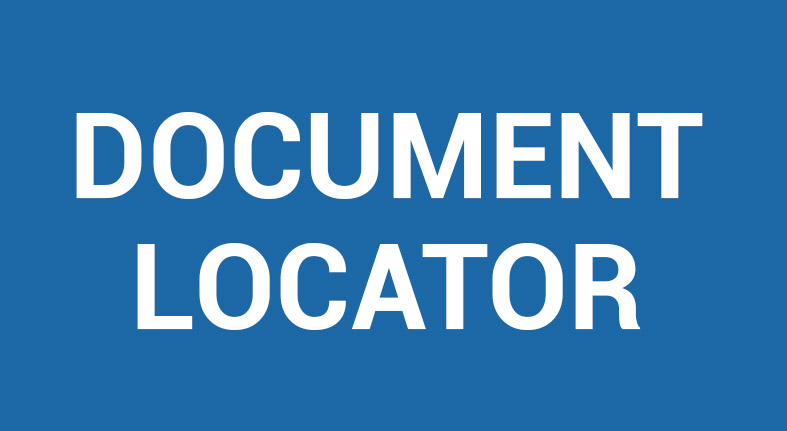A not-for-profit insurance pool delivers added value for member-owners across Oregon
Living documents demand smart file management
CIS is a public entity risk pool serving Oregon’s city and county governments. As a not-for-profit trust, it’s an alternative to the private insurance market, offering member-owners better coverage at a lower cost.
For about ten years, Document Locator has served as its fundamental file management system. Before DL, CIS used a shared file server for internal records and a web server for online records. Documents were edited on team hard drives or by hand, then uploaded back to the server or passed around by email.
Bear in mind, insurance hinges on accuracy, and the records CIS uses are living documents. They’re also collaborative, passing through many hands. For CIS, then, effective document management isn’t just a routine chore. It’s mission-critical.
Multiple platforms, constant headaches
Before DL, finding a document required concentration, tenacity and luck. You couldn’t be sure if what you needed was on the shared server, buried in an email chain or saved to someone’s hard drive.
More concerning, if a team member edited a record in one location, those changes weren’t reflected anywhere else. If someone else modified the same record in a different location, the result was two documents (or three, or more), each with important but unreconciled updates. Resolving discrepancies took a line-by-line comparison of every version; even so, you couldn’t guarantee you’d caught it all.
CIS made the move to DL on their auditor’s suggestion. He had worked with many other insurance pools, and he knew there was a better way.
Versioning eliminated duplicates, ended the confusion
DL lets multiple authors take turns editing a file centrally, without churning out duplicates. They can assign a single file name to each record, so it’s easy to find what you need. For living documents that evolve over time, authors can use a previous report as a template, without losing historical versions – with revision history, it’s easy to retrieve archival documents.
“I can put together a board packet much faster than I ever could have in the past,” said Executive Director Lynn McNamara. “If Document Locator didn’t exist, it would add hours to our day.”
How to manage a library with no manual effort?
DL also resolved a great deal of inefficiency with the organization’s website. CIS maintains a massive online risk resource library, where member-owners can access layers of complex information. In the past, if a file were to be published online, you had to put in a request to IT, who would copy a file from the internal server and duplicate it onto the web server. Library requests consumed hours of IT time, and the approach was predicated on duplication. Time was wasted. Mistakes were inevitable.
Profiles proved the solution. Each document in DL has a checkbox in its profile, which, when checked, posts the file directly to the organization’s custom-built website. To download a document from the website, users can simply click a link. No more duplications between servers, no need to bother IT – and every live file on the website is fully updated.
Extending the functionality to claims
Building on Document Locator’s API, CIS extended the system’s functionality to integrate with their claims system. “The way DL has been able to integrate with claims has just been brilliant. The document management piece is absolutely seamless,” said Ms. McNamara.
To file a claim, members complete an online form and upload digital attachments, which are automatically organized in DL. “That’s been a key part of our success there, the way DL is able to work with our API,” said CIO Mark Snodgrass. “The flexibility of the system, that you can make things work in a lot of different ways, that’s what I appreciate most.”
Gradual acceptance, long-term success
User acceptance was rocky at first. Generating a document with DL takes a little extra thought; you have to choose a profile and complete the required fields. It’s not hard, but change is uncomfortable.
To help team members adjust, CIS held trainings twice a month, published tutorials on their internal blog and walked people through the learning curve. Often the lights-on moment came when a team member saw for themselves the difference DL made. At that point, they stopped resisting the solution and started championing it.
ColumbiaSoft supported the transition with extensive documentation and training videos, as well as a three-day orientation. “We’ve sent multiple people to that workshop over the years,” said Julie LaMarche, Marketing and Communications Coordinator. “The documentation, it’s all really helpful.”
DL hasn’t yet freed up any physical storage space for CIS – but it will. Their claims department currently keeps paper records, but it’s getting ready to go paperless. When it does, no new paper will be generated, and once the retention date on old records is met, paper storage will be unnecessary.
“It’s really a robust system,” said Ms. LaMarche. “There are areas of DL we haven’t utilized yet. There’s room for us to grow with it.” And CIS will certainly grow. “We are a very agile, changing organization,” Ms. McNamara added. “DL has kept up with us.”
Learn more
Be ready for the next audit
Employee files under control
Structured project files
Automate business processes
Ready for a Demo?
Take the first step towards streamlining your processes and enhancing collaboration with Document Locator. Request a demo today and discover how our document control solution can help your organization.
Fill out the form to get started.




